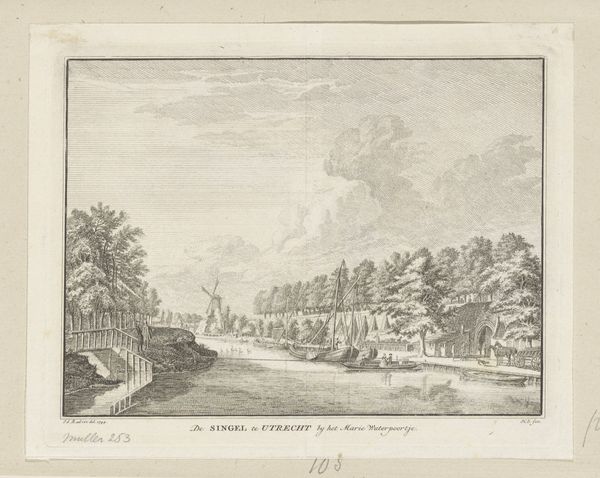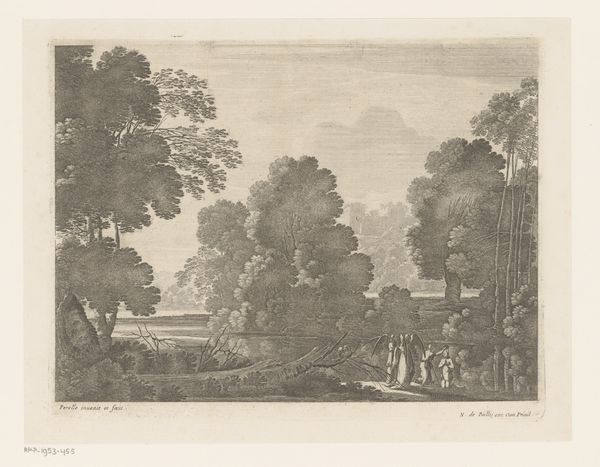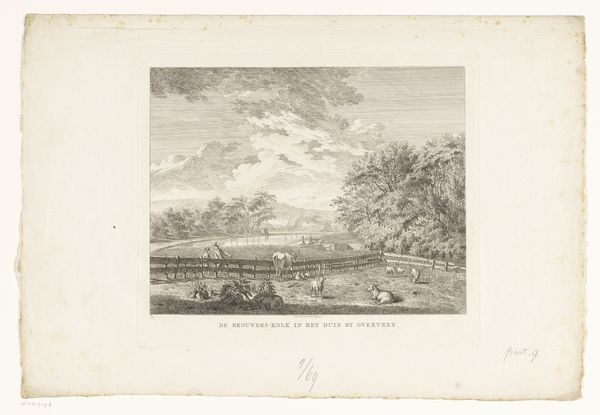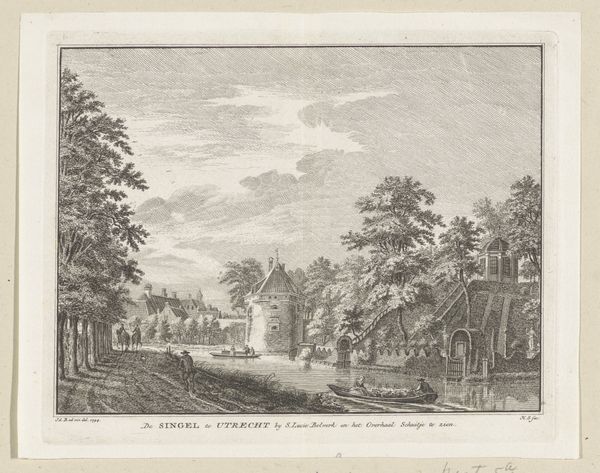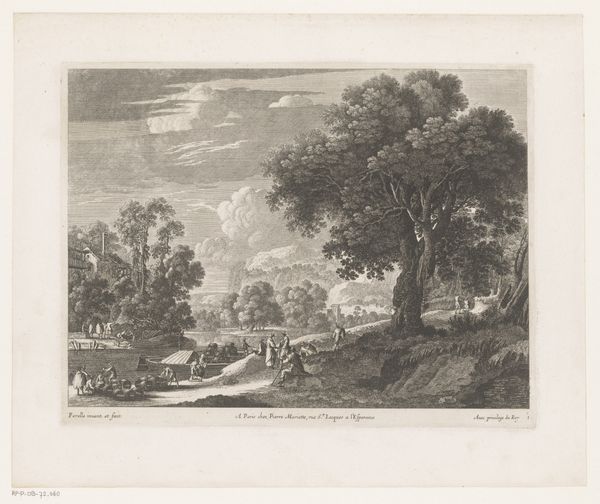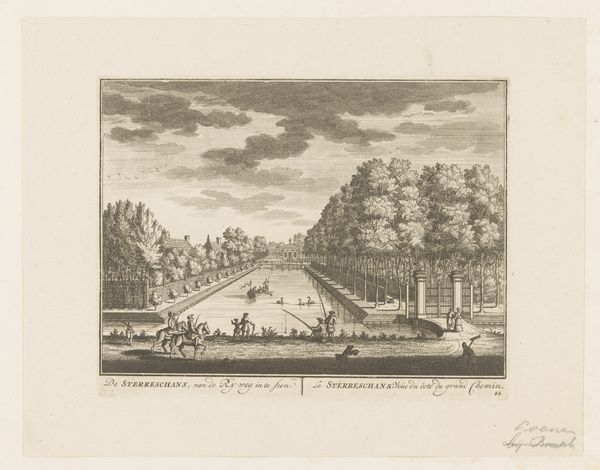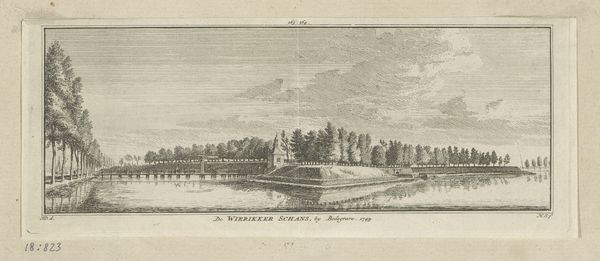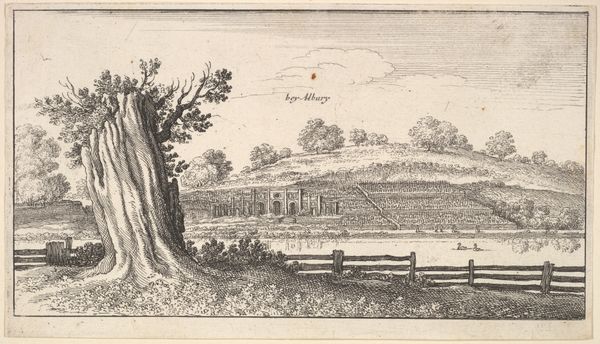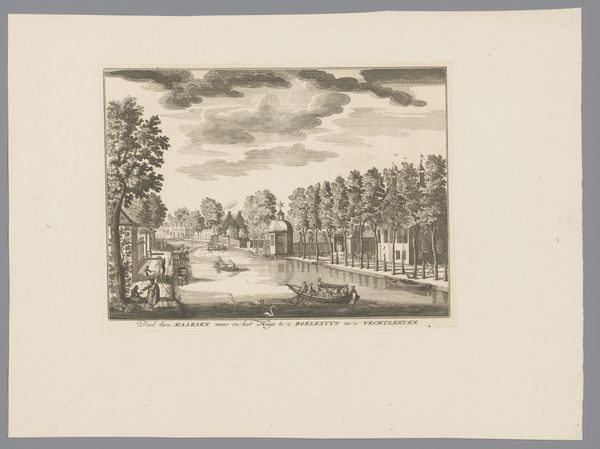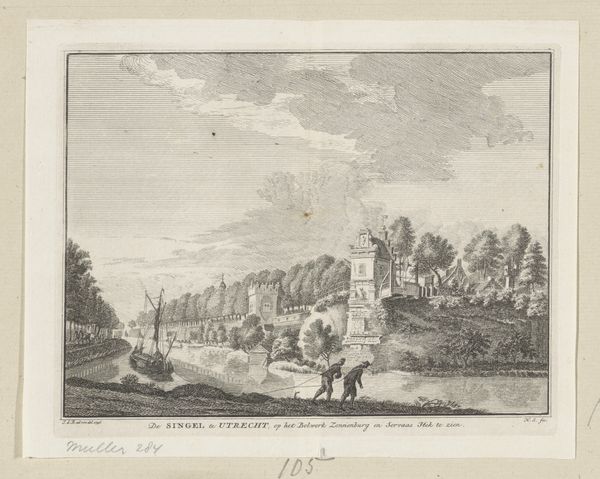
Dimensions: height 165 mm, width 207 mm
Copyright: Rijks Museum: Open Domain
Editor: Here we have Hendrik Spilman's "View of the Bulwark and the Maliepoort in Utrecht," created sometime between 1773 and 1792. It’s an etching and engraving. The delicate lines create this serene, almost melancholic mood. What catches your eye in this piece? Curator: I'm immediately drawn to the process. Look at the way Spilman uses etching and engraving. We're seeing the product of very specific labor here. Consider the engraver hunched over the plate, meticulously working to render not just the scene, but also an aspirational vision of civic order. This piece becomes evidence of craft, of specialized knowledge circulated as commodity. Editor: So, you're focusing on the physical making of the artwork and its value as a sort of skilled product? Curator: Exactly! How are images manufactured and consumed? And what’s deliberately left out? This tranquil scene omits the everyday realities— the sounds, the smells, the potential social unrest inherent in a city. We’re looking at a highly selective presentation, created through a specific, demanding process, geared towards a particular viewership. Editor: That’s a very different way of seeing it. I was caught up in the beauty of the landscape itself. Curator: And that beauty is deliberately constructed! Ask yourself, who commissioned this? What were they hoping to communicate through this meticulously crafted image? Consider the role of printmaking in disseminating specific ideas and ideals during this period. Editor: So it's less about the 'what' and more about the 'how' and 'why' it was made. Curator: Precisely. And how the material reality of its production shaped what we see. Editor: I see it now. I was thinking only of the landscape, and not enough about the labor that went into it. Thanks for the insight!
Comments
No comments
Be the first to comment and join the conversation on the ultimate creative platform.
